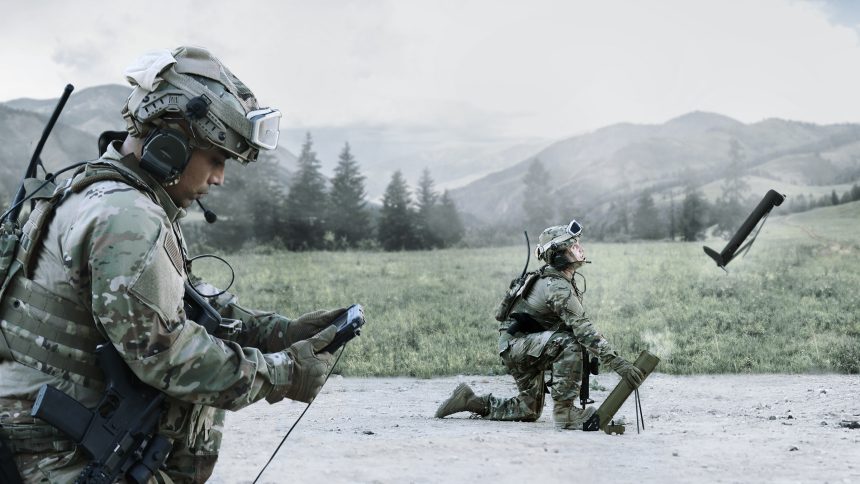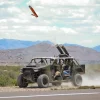Ukraine’s ongoing conflict with Russia has witnessed the emergence of a game-changing weapon—the Switchblade 300 kamikaze drone developed by AeroVironment. In a recent engagement, the Ukrainian Armed Forces showcased the drone’s effectiveness by successfully striking a Russian Osa surface-to-air missile system, highlighting its significance on the battlefield.
The deployment of approximately 1,000 Switchblade 300 units in spring 2022, each costing $6,000, has given Ukraine a powerful tool against its adversaries. Capable of engaging targets up to 10 kilometers away, this agile drone can reach speeds of around 100 km/h, offering a valuable tactical advantage. With a flight duration of up to 15 minutes, the Switchblade 300 demonstrates its capacity for swift and precise strikes.
However, as Russia aims to neutralize the Switchblade 300’s impact, a recent video revealed their method of countering the drone. Russian troops have been seen employing camouflage nets above their surface-to-air missile systems, effectively shielding their assets from aerial attacks. These simple, cost-effective measures protect advanced drones like the Lancet and the US-supplied Switchblade loitering munitions.
The escalation of weapon advancements has sparked a parallel evolution in defensive countermeasures. Both sides are driven by the relentless pursuit of gaining an edge over their adversaries. To this end, the development of anti-drone systems, electronic warfare techniques, and the implementation of advanced camouflaging and decoy tactics have become key strategies to shield troops and weaken the attacking power of their rivals.
This constant dance between innovation and adaptability underscores the ever-changing landscape of warfare. The Ukrainian conflict is a stark reminder of the offensive and defensive capabilities competition. The quest for superior weaponry and effective defenses remains a critical aspect of modern warfare, where the ability to adapt and outmaneuver the enemy can mean the difference between survival and defeat.
As Ukraine and Russia continue to engage in this protracted struggle, it becomes evident that the dynamics of warfare are not fixed but constantly evolving. The introduction of the Switchblade 300 kamikaze drone has undoubtedly tipped the scales in Ukraine’s favor, but Russia’s subsequent development of countermeasures highlights the need for continuous innovation. In this relentless pursuit of superiority, both sides strive to gain the upper hand, resulting in an ever-shifting battlefield where each new advancement is met with a corresponding defensive response.
Ultimately, the conflict in Ukraine serves as a poignant reminder of the inherent competition between attack and defense in warfare. As technology advances and tactics evolve, the quest for supremacy remains an enduring aspect of armed conflicts, demanding unwavering determination and ingenuity from those pursuing victory.





